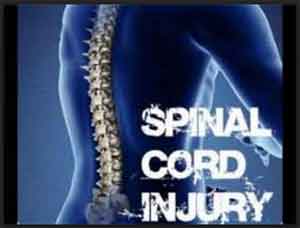- Home
- Editorial
- News
- Practice Guidelines
- Anesthesiology Guidelines
- Cancer Guidelines
- Cardiac Sciences Guidelines
- Critical Care Guidelines
- Dentistry Guidelines
- Dermatology Guidelines
- Diabetes and Endo Guidelines
- Diagnostics Guidelines
- ENT Guidelines
- Featured Practice Guidelines
- Gastroenterology Guidelines
- Geriatrics Guidelines
- Medicine Guidelines
- Nephrology Guidelines
- Neurosciences Guidelines
- Obs and Gynae Guidelines
- Ophthalmology Guidelines
- Orthopaedics Guidelines
- Paediatrics Guidelines
- Psychiatry Guidelines
- Pulmonology Guidelines
- Radiology Guidelines
- Surgery Guidelines
- Urology Guidelines
Breakthrough research- 3-D printing may improve outcomes in spinal cord injuries

The researchers at the University of Minnesota have developed a groundbreaking 3D-printed device that could potentially help patients with long-term spinal cord injuries regain some function.
The research is published in the journal Advanced Functional Materials.
A 3D-printed guide, made of silicone, serves as a platform for specialized cells that are then 3D printed on top of it. The guide would be surgically implanted into the injured area of the spinal cord where it would serve as a type of “bridge” between living nerve cells above and below the area of injury. The hope is that this would help patients alleviate pain as well as regain some functions like control of muscles, bowel, and bladder.
“This is the first time anyone has been able to directly 3D print neuronal stem cells derived from adult human cells on a 3D-printed guide and have the cells differentiate into active nerve cells in the lab,” said Michael McAlpine, co-author of the study and University of Minnesota Benjamin Mayhugh Associate Professor of Mechanical Engineering in the University’s College of Science and Engineering.
“This is a very exciting first step in developing a treatment to help people with spinal cord injuries,” said Ann Parr, a co-author of the study and University of Minnesota Medical School Assistant Professor in the Department of Neurosurgery and Stem Cell Institute. “Currently, there aren’t any good, precise treatments for those with long-term spinal cord injuries.”
Also Read: Scientists develop nanoparticle-antioxidants to treat strokes and spinal cord injuries
In this new process developed at the University of Minnesota over the last two years, researchers start with any kind of cell from an adult, such as a skin cell or blood cell. Using new bioengineering techniques, the medical researchers are able to reprogram the cells into neuronal stem cells. The engineers print these cells onto a silicone guide using a unique 3D-printing technology in which the same 3D printer is used to print both the guide and the cells. The guide keeps the cells alive and allows them to change into neurons. The team developed a prototype guide that would be surgically implanted into the damaged part of the spinal cord and help connect living cells on each side of the injury.
“Everything came together at the right time,” Parr said. “We were able to use the latest cell bioengineering techniques developed in just the last few years and combine that with cutting-edge 3D-printing techniques.”
Even with the latest technology, developing the prototype guides wasn’t easy.
“3D printing such delicate cells was very difficult,” McAlpine said. “The hard part is keeping the cells happy and alive. We tested several different recipes in the printing process. The fact that we were able to keep about 75 percent of the cells alive during the 3D-printing process and then have them turn into healthy neurons is pretty amazing.”
If the next steps are successful, the payoff for this research could be life-changing for those who suffer from spinal cord injuries.
“We’ve found that relaying any signals across the injury could improve functions for the patients,” Parr said. “There’s a perception that people with spinal cord injuries will only be happy if they can walk again. In reality, most want simple things like bladder control or to be able to stop uncontrollable movements of their legs. These simple improvements in function could greatly improve their lives.”
For further information log on to https://doi.org/10.1002/adfm.201801850

Disclaimer: This site is primarily intended for healthcare professionals. Any content/information on this website does not replace the advice of medical and/or health professionals and should not be construed as medical/diagnostic advice/endorsement or prescription. Use of this site is subject to our terms of use, privacy policy, advertisement policy. © 2020 Minerva Medical Treatment Pvt Ltd